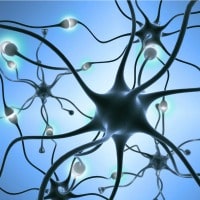The need for, and mechanisms that drive sleep have consistently puzzled scientists. However, novel work from researchers at the University of Wisconsin School of Medicine and Public Health have tested their synaptic homeostasis hypothesis (SHY) for why animals need sleep.
SHY theory describes a need for sleep
This four-year study by Luisa de Vivo and her colleagues, published in Science, supported the SHY theory. The SHY theory describes changes in synapses during waking and sleeping hours. Synapses are the junctions between two neurons, the larger the synapse, the stronger these two neurons can communicate – this ease of communication is how animals learn skills and make memories. Yet in order for brains to be pliable and learn new things, the synapses must shrink so these neural pathways can be activated again. SHY theory suggests that sleep allows these synapses to shrink.
According to SHY theory, sleep provides the perfect environment for the shrinking of synapses, allowing the brain to learn new things following day. The lack of stimulation while sleeping results in reduced activity between neurons, and therefore the distance between the neurons grows smaller allowing them to be activated with a weaker stimulation. This phenomenon allows brains to make new neural connections the following day, thereby allowing new memories to form and more efficient learning.
Testing SHY theory
Lead author Luisa de Vivo, along with her fellow researchers, tested their theory by measuring the size of synapses both before and after sleep. They utilized three-dimensional scanning electron microscopy to visualize and reconstruct the mouse brain and measured nearly 7000 synapses. They specifically looked at neurons involved in motor functions and sensory perception. The team then repeated this process after the mice had slept (making sure to note how long the mice had slept), and measured the synapses again.
The researchers found that the synaptic size correlated with the amount of sleep the mice had. The longer the mice had slept, the smaller the synapses had become – with a few hours sleep resulting in the reduction by ~18 percent. Interestingly, the researchers only observed this phenomenon in ~80 percent of synapses and that the largest of synapses appeared not to be susceptible to the shrinking. They hypothesize that these synapses might not follow the pattern because those synapses are associated with stable, long-term memories or skills. These results support SHY’s central tenant that the function of sleep is to renormalize synapse size that increases throughout the day. The researchers theorize that the shrinking of the synapses might be related to the lack of neurotransmitters during sleep, especially noradrenaline.
Giulio Tononi, head of the research group and Chair of Sleep Medicine at the University of Wisconsin believes the relevance of this works extends beyond mice, “extrapolating from mice to humans, our findings mean that every night trillions of synapses in our cortex could get slimmer by nearly 20 percent,”
The lack of stimulation that brains receive during sleep allows specific synapses to shrink, resulting in a brain that is ready to learn and create new memories the following day. This research provides rationale to the large body of work that suggests animals learn skills better following a long sleep. Important synapses and neural pathways seem immune to this process of “renormalization” indicating that systems have evolved to preserve important memories and skills.




